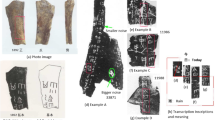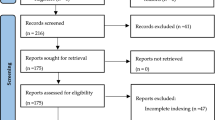Abstract
Cultural heritage is the asset of all the peoples of the world. The preservation and inheritance of cultural heritage is conducive to the progress of human civilization. In northwestern China, there is a world heritage site – Mogao Grottoes – that has a plenty of mural paintings showing the historical cultures of ancient China. To study these historical cultures, one critical procedure is to date the mural paintings, i.e., determining the era when they were created. Until now, most mural paintings at Mogao Grottoes have been dated by directly referring to the mural texts or historical documents. However, some are still left with creation-era undetermined due to the lack of reference materials. Considering that the drawing style of mural paintings was changing along the history and the drawing style can be learned and quantified through painting data, we formulate the problem of mural-painting dating into a problem of drawing-style classification. In fact, drawing styles can be expressed not only in color or curvature, but also in some unknown forms – the forms that have not been observed. To this end, besides sophisticated color and shape descriptors, a deep convolution neural network is designed to encode the implicit drawing styles. 3860 mural paintings collected from 194 different grottoes with determined creation-era labels are used to train the classification model and build the dating method. In experiments, the proposed dating method is applied to seven mural paintings which were previously dated with controversies, and the exciting new dating results are approved by the Dunhuang experts.
Similar content being viewed by others
References
Taylor R P, Micolich A P, Jonas D. Fractal analysis of pollock’s drip paintings. Nature, 1999, 399: 422
Lyu S, Rockmore D, Farid H. A digital technique for art authentication. Proc Natl Acad Sci USA, 2004, 101: 17006–17010
Johnson C R, Hendriks E, Berezhnoy I J, et al. Image processing for artist identification. IEEE Signal Process Mag, 2008, 25: 37–48
Hughes J M, Graham D J, Rockmore D N. Quantification of artistic style through sparse coding analysis in the drawings of Pieter Bruegel the Elder. Proc Natl Acad Sci USA, 2010, 107: 1279–1283
Hughes J M, Foti N J, Krakauer D C, et al. From the cover: quantitative patterns of stylistic influence in the evolution of literature. Proc Natl Acad Sci USA, 2012, 109: 7682–7686
Qi H, Taeb A, Hughes S M. Visual stylometry using background selection and wavelet-HMT-based Fisher information distances for attribution and dating of impressionist paintings. Signal Process, 2013, 93: 541–553
Kim D, Son S-W, Jeong H. Large-scale quantitative analysis of painting arts. Sci Rep, 2014, 4: 7370
Alameda-Pineda X, Ricci E, Yan Y, et al. Recognizing emotions from abstract paintings using non-linear matrix completion. In: Proceedings of the IEEE Conference on Computer Vision and Pattern Recognition, Las Vegas, 2016. 5240–5248
Ornes S. Science and culture: charting the history of Western art with math. Proc Natl Acad Sci USA, 2015, 112: 7619–7620
Lowe D G. Object recognition from local scale-invariant features. In: Proceedings of the 7th IEEE International Conference on Computer Vision, Corfu, 1999. 1150–1157
Perronnin F, Sánchez J, Mensink T. Improving the fisher kernel for large-scale image classification. In: Proceedings of European Conference on Computer Vision, Heraklion, 2010. 143–156
Perronnin F, Dance C. Fisher kernels on visual vocabularies for image categorization. In: Proceedings of IEEE Conference on Computer Vision and Pattern Recognition, Minneapolis, 2007. 1–8
van de Weijer J, Schmid C, Verbeek J, et al. Learning color names for real-world applications. IEEE Trans Image Process, 2009, 18: 1512–1523
Benavente R, Vanrell M, Baldrich R. Parametric fuzzy sets for automatic color naming. J Opt Soc Am A, 2008, 25: 2582–2593
Berlin B, Kay P. Basic Color Terms: Their Universality and Evolution. Berkeley: University of California Press, 1991
Khan R, van de Weijer J, Shahbaz Khan F, et al. Discriminative color descriptors. In: Proceedings of IEEE Conference on Computer Vision and Pattern Recognition, Portland, 2013. 2876–2883
Zou Q, Qi X B, Li Q Q, et al. Discriminative regional color co-occurrence descriptor. In: Proceedings of International Conference on Image Processing, Quebec City, 2015. 696–700
Zou Q, Ni L, Wang Q, et al. Local pattern collocations using regional co-occurrence factorization. IEEE Trans Multimedia, 2017, 19: 492–505
Deng C W, Huang G B, Xu J, et al. Extreme learning machines: new trends and applications. Sci China Inf Sci, 2015, 58: 020301
Hinton G E, Salakhutdinov R R. Reducing the dimensionality of data with neural networks. Science, 2006, 313: 504–507
Bengio Y, Lamblin P, Popovici D, et al. Greedy layer-wise training of deep networks. In: Proceedings of Annual Conference on Neural Information Processing Systems (NIPS). Cambridge: MIT Press, 2006. 153–160
Gao W, Zhou Z H. Dropout rademacher complexity of deep neural networks. Sci China Inf Sci, 2016, 59: 072104
Deng L, Yu D. Deep learning: methods and applications. Trends Signal Process, 2013, 7: 197–387
LeCun Y, Boser B, Denker J S, et al. Backpropagation applied to handwritten zip code recognition. Neural Comput, 1989, 1: 541–551
Krizhevsky A, Sutskever I, Hinton G E. Imagenet classification with deep convolutional neural networks. In: Proceedings of the 25th International Conference on Neural Information Processing Systems, Lake Tahoe, 2012. 1097–1105
Szegedy C, Liu W, Jia Y Q, et al. Going deeper with convolutions. In: Proceedings of IEEE Conference on Computer Vision and Pattern Recognition, Boston, 2015. 1–9
Simonyan K, Zisserman A. Very deep convolutional networks for large-scale image recognition. 2015. ArXiv:1409.1556
Gatys L A, Ecker A S, Bethge M. Image style transfer using convolutional neural networks. In: Proceedings of IEEE Conference on Computer Vision and Pattern Recognition, Las Vegas, 2016. 2414–2423
Crowley E J, Zisserman A. In search of art. In: Computer Vision - ECCV 2014 Workshops. Berlin: Springer, 2014. 54–70
Nair V, Hinton G E. Rectified linear units improve restricted boltzmann machines. In: Proceedings of the 27th International Conference on International Conference on Machine Learning, Haifa, 2010. 807–814
Dong Z, Liang W, Wu Y W, et al. Nonnegative correlation coding for image classification. Sci China Inf Sci, 2016, 59: 012105
Chen L, Chen J, Zou Q, et al. Multi-view feature combination for ancient paintings chronological classification. J Comput Cult Herit, 2017, 10: 701–715
Sande K, Gevers T, Snoek C G M. Evaluating color descriptors for object and scene recognition. IEEE Trans Pattern Anal Mach Intell, 2010, 32: 1582–1596
Aitken M J. Science-based dating in archaeology. New York: Routledge, 2014
Pike A W, Hoffmann D L, Garcia-Diez M, et al. U-series dating of Paleolithic art in 11 caves in Spain. Science, 2012, 336: 1409–1413
Wang H. A study of shi-bao Guanyin and shi-gan-lu Guanyin images at cave 205 of the Mogao Grottes. J Dunhuang Studies, 2010, 1: 58–65
Acknowledgements
This work was supported by National Basic Research Program of China (Grant No. 2012CB725303), Major Program of Key Research Institute on Humanities and Social Science of the Chinese Ministry of Education (Grant No. 16JJD870002), and National Natural Science Foundation of China (Grant Nos. 91546106, 61301277). The authors would like to thank the Dunhuang Research Academia for providing the moral paintings of Dunhuang-P7, and thank Mr. Hui-Min WANG for helpful suggestions and discussions.
Author information
Authors and Affiliations
Corresponding author
Rights and permissions
About this article
Cite this article
Li, Q., Zou, Q., Ma, D. et al. Dating ancient paintings of Mogao Grottoes using deeply learnt visual codes. Sci. China Inf. Sci. 61, 092105 (2018). https://doi.org/10.1007/s11432-017-9308-x
Received:
Accepted:
Published:
DOI: https://doi.org/10.1007/s11432-017-9308-x




